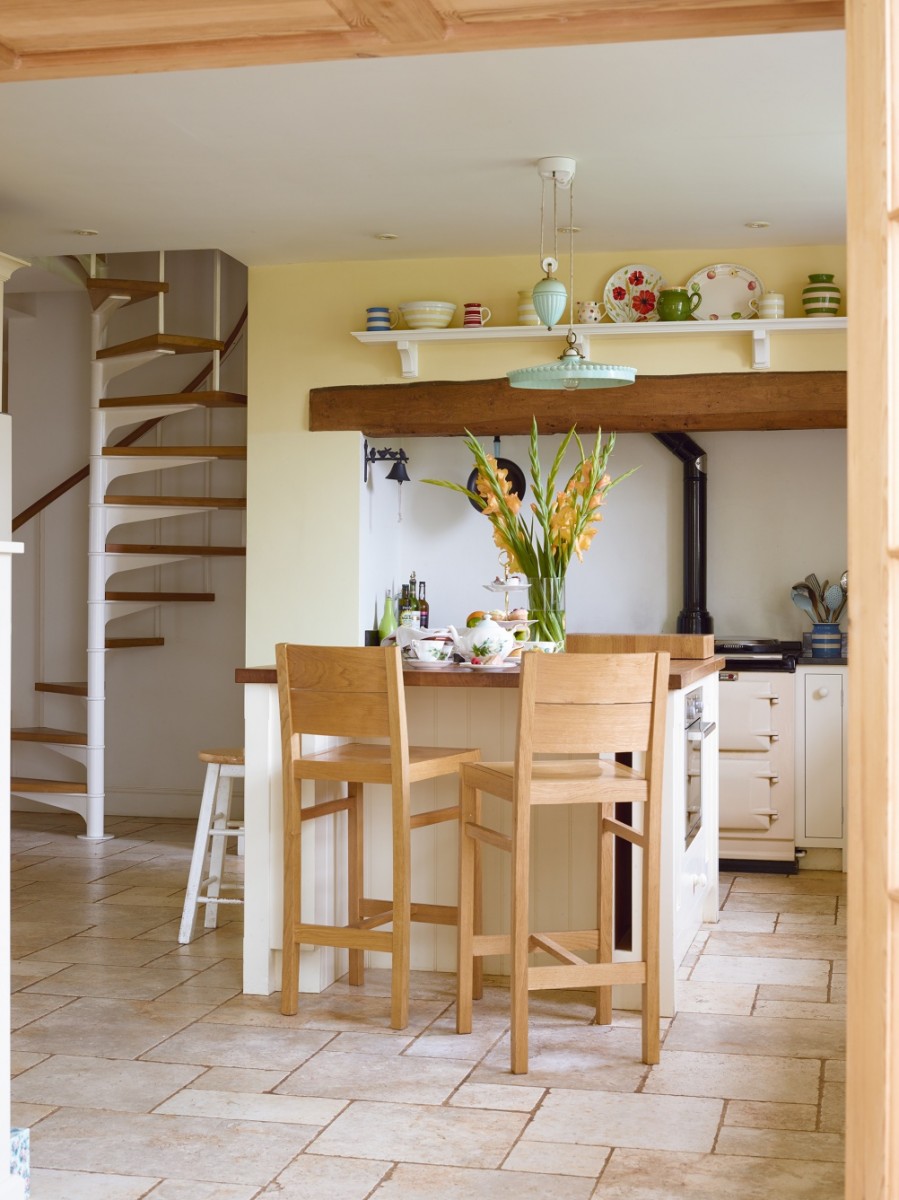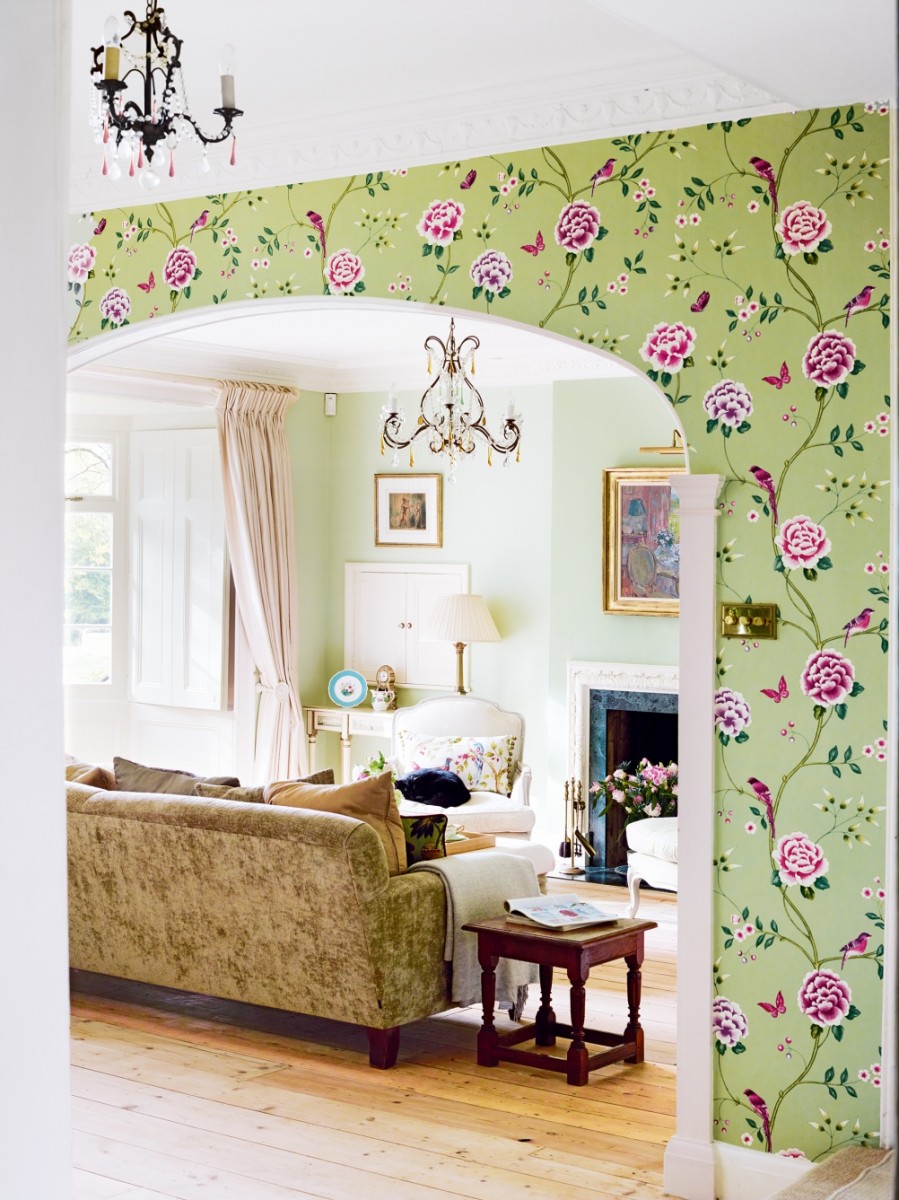Helen Salvor revived a converted Grade II-listed Georgian rectory in Buckinghamshire with structural repairs and by installing a sympathetic-style orangery. This article appeared in Real Homes Magazine in June 2014.
When Helen Salver spotted an advert in a magazine for a Grade II-listed rectory that was for sale, she knew that she had found her dream home.
She was already planning to leave London in search of a better quality of life for her young children, and this property fitted the bill perfectly.
‘It had everything that I was looking for – a large house and extensive gardens in a idyllic location,’ says Helen.
‘I went online straight away and fell in love with it once I’d seen more pictures.’
Making the decision to buy the property turned out to be the easy part, however, and another year passed before Helen could finally move in. It took six months for the sale to complete and then she waited until the children had finished a school term to cause the least possible disruption.‘I didn’t marry Paul until 2010, so when I bought the house, I moved in as a single parent and didn’t know anyone,’ recalls Helen. ‘Suddenly I had this hug ramshackle house for only me and my children to roam around in. Christopher was 10 at the time and Natasha was seven, so for them it was a complete adventure.
The property
‘I didn’t do anything to the house for the first year,’ Helen continues. ‘It was summer when we moved in. We had the gardens to enjoy, so the state of the house didn’t matter too much as I thought I could simply carry out any repairs later. This “holiday period” also gave me time to discover the house properly, and think about what we needed from the space as a family. I also did some research and found an architect and builders in the local area that I could use when I was ready to start work on the house.’
The rectory had been well loved by its previous owners and they had maintained its sense of Georgian grandeur, but dark flocked wallpaper and imposing paint colours made the rooms feel uninviting. Vital repairs to the house had also been left untouched for years due to cost restraints, and, in effect, any work done had simply been a temporary update.

from Cygnet Interiors match the Shaker style perfectly. The units have been painted in Cooks Cream and the wall in Roman Ochre, both by Fired Earth. An old spiral staircase, sourced by the builders to replace the original one in the space, has been revived with new oak treads. Try Albion Design for a similar staircase. The limestone flooring from Hard Rock Flooring continues into the orangery
Structural issues
Helen’s holiday period came to an abrupt end when she discovered that the walls were starting to come away from the windows at the front of the house, plus a large area of the roof was leaking, threatening to bring down the ceilings. She realised that she had no choice but to call in a structural engineer to make sure that the house was safe for her and the children to live in.
‘Most of the windows were so rotten that I thought they were beyond repair, plus the plaster had blown on most of the walls,’ says Helen. ‘On further investigation by the structural engineer, I learnt that the property had been two timber-framed houses dating from the early Georgian period. These were joined together by a more elaborate brick facade built in later Georgian times, and this was pulling away from the timber houses behind. It was a nerve-wracking experience to discover this.’
Helen felt that drastic action was needed to stop the whole house from tumbling down, so she drew up a list of immediate repairs, as well as a wishlist of how she wanted to improve the house. ‘I’d always wanted an orangery so this was something I was keen to install while doing the renovation work,’ she explains.

Renovation work
Realising the extent of the work needed, Helen made the decision to tackle all the necessary tasks head on, using an architect to help with planning permission and listed building consent. ‘I’d heard horror stories about how long it could take to get planning permission, so I was ready for the challenge,’ she says, ‘but thanks to my architect David Watling [who has since retired, it only took around six months to get approval for the project.’
Scaffolding went up around the whole house, and the builders, who were sourced by the architect, started work. The house was tackled in sections so that Helen and the children could continue to live in it throughout the build, moving from one section of the house to the next as work was completed. ‘Due to the house’s listed status, it became clear that only like-for-like changes would be deemed acceptable, making the process costlier and potentially time-consuming,’ explains Helen.
The roof
Thankfully, it wasn’t necessary to replace the entire roof, and the damaged sections were repaired and patched up with handmade clay peg tiles to match the original ones. Part of the front wall of the house also had to come down so that it could be rebuilt properly using the same bricks as before. Any damaged roof timbers had to be repaired with the same type of wood, and the walls had to have an authentic Georgian plaster finish.
The windows
Fortunately for Helen, her sister’s husband Oliver Kelly owns a sash window company specialising in restoration, so she enlisted his help with repairing the windows, plus he was happy to give advice. ‘Oliver was instrumental in renovating and rescuing the rectory, guiding me throughout the whole process,’ says Helen. ‘He restored or made every single window in this house.’
The orangery
The new orangery at the rear of the house was designed by Helen and her architect to be in keeping with the property. ‘I always felt that a house such as this should have had an orangery, and when we submitted plans for approval they were approved without any problems,’ says Helen. ‘It was all built from scratch by the builders and Oliver, who made all the windows and doors for it. It has become a real party room for when family and friends visit, and it’s now my favourite room in the house.’
Interior design
The building work took several months to complete, but, with the house structurally sound and weatherproof, Helen could begin to think about the design of the interior spaces, which she has gradually developed over a number of years. ‘For the interior, I worked with what I thought suited my home best,’ she says. ‘For me, this house is all about letting the outside in, with lots of natural light and unobstructed views of the garden from the windows. It was also important to me to keep an authentic Georgian feel, but while also making it suitable for 21st-century living.’ This is evident by the clever way that Helen has integrated modern items into the space.
The floral and bird wallpapers are her inexpensive homage to the period styles she’d seen in a showroom at the Chelsea Harbour Design Centre in London. Helen found the designs she eventually used for a fraction of the price after some research with her friend, interior designer Margaret Whitworth. In the green living room, modern technology, such as the large TV, is hidden away in a tall, classically inspired cabinet that was made specially for this purpose.
This combination of traditional style with modern convenience continues in the kitchen, which Helen had made bespoke by a local designer. ‘The new kitchen has given me all the storage space that I required, without the need to compromise on necessities such as a dishwasher and a large integrated fridge,’ she explains. ‘Even the large Aga is, in fact, a traditional range cooker with a more conventional oven fitted alongside it. It means I can use both at Christmas or for big family events, when I need lots of oven space, but then I can turn off the Aga in the summer in order to keep down the running costs.’
To enhance the feeling of light and space throughout the house, Helen has opted for a natural colour palette of yellow, blue, green and cream. Patterned wallpaper adds a striking focal point to many of the spaces, while window dressings include simple pale-coloured silk blinds and curtains, so as not to detract from the views.
The fully restored rectory is stunning, sitting in three acres of beautiful gardens. ‘Paul and I always have friends over, and this is the perfect place for entertaining,’ says Helen. ‘The whole process of the renovation project was far harder than I imagined, but I’m so happy with what I’ve achieved as this character-filled building is once more a wonderful family home.’

